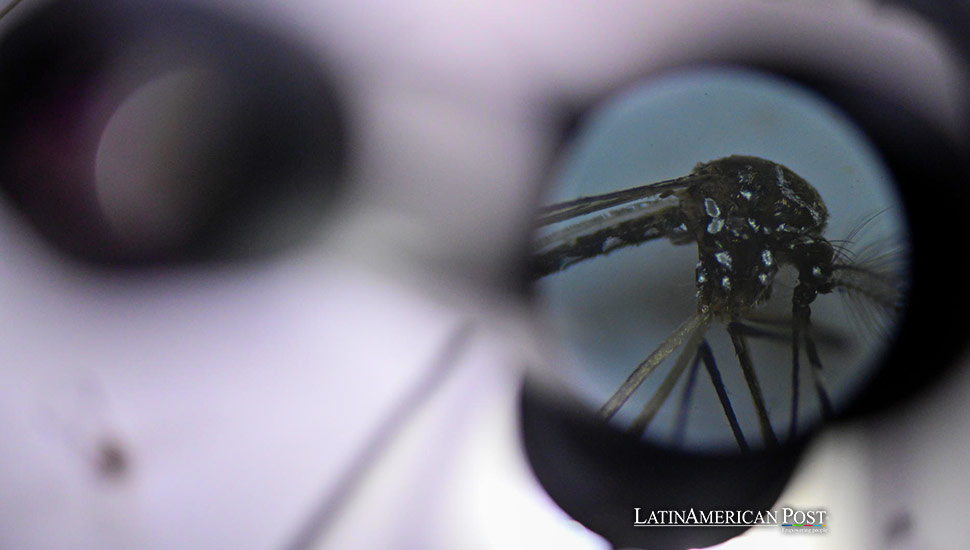Technology and Public Health Needed to Combat Growing Dengue Threat in Brazil and Mexico

With over 8.1 million cases, dengue ravages the Americas, and experts predict it will engulf nearly all of Brazil and Mexico by 2039, posing unprecedented public health challenges.
Dengue fever, a mosquito-borne viral infection, is wreaking havoc across the Americas. An alarming prediction is that it will affect almost all of Brazil and Mexico by 2039. According to a comprehensive study published in Nature Communications, this rapid spread poses significant challenges for the two largest countries in Latin America.
The study, a collaboration among scientists from Canada, the United Kingdom, Australia, the United States, Brazil, and Mexico, provides a dire forecast. By 2039, 97% of Brazilian and 81% of Mexican municipalities will be affected by dengue. This expansion will be particularly pronounced in Mexico’s central plateau and the southern regions of Brazil.
The research highlights a dramatic increase in dengue cases in both countries over the past few decades. In Mexico, the number of municipalities affected by dengue rose from 16 in 1996 to 1,350 by the end of 2019. Similarly, in Brazil, dengue cases expanded from 549 towns in 2001 to 4,299 municipalities by 2019.
Contributing Factors: Climate Change and Mobility
The study attributes the accelerated spread of dengue to climate change and increased human mobility. Rising temperatures, higher humidity levels, and increased rainfall create ideal breeding conditions for the Aedes aegypti mosquito, the primary vector for dengue. The global climate crisis exacerbates these environmental conditions, making previously unaffected areas vulnerable to outbreaks.
Vinyas Harish, a researcher from the University of Toronto and one of the study’s authors, emphasized the novel approach of integrating environmental factors with population mobility data using machine learning. “To understand how dengue affects populations, we must combine environmental data with mobility patterns over time. Machine learning allowed us to integrate these perspectives effectively,” Harish explained.
This innovative methodology provided a more comprehensive understanding of how dengue spreads, highlighting the critical role of human movement in transmitting the virus across regions.
Dengue has a long history in Latin America, dating back to the 18th century. However, it became a primary public health concern in the latter half of the 20th century. The first significant dengue outbreak in the Americas occurred in 1981 in Cuba, followed by subsequent epidemics in various countries.
The rapid urbanization and population growth in Latin American cities have further contributed to the proliferation of dengue. Poor urban planning, inadequate waste management, and lack of access to clean water have created environments where mosquitoes thrive, facilitating the spread of the virus.
Current Situation: An Escalating Crisis
The current dengue situation in the Americas is dire. The Pan American Health Organization (PAHO) reported that in the first half of this year, there were three times more documented cases than in the same period in 2023, with deaths reaching 3,600. This surge underscores the urgency of addressing the dengue epidemic.
In Mexico, dengue’s expansion is predicted to reach the interior highlands, including Tijuana, by 2027-2030 and Mexico City by 2038-2039. In Brazil, the southern regions will significantly increase dengue cases in the coming years.
The implications of this expanding dengue epidemic are profound. Dengue fever can range from mild, flu-like symptoms to severe, life-threatening conditions, including hemorrhagic fever and dengue shock syndrome. For instance, in a small town in Brazil, a dengue outbreak led to the hospitalization of over 100 people, with several deaths reported. This underscores the severity of the disease and the need for immediate action. With no specific treatment available, the primary strategy for managing dengue is prevention through mosquito control and public awareness.
PAHO emphasizes that preventive measures are crucial, as there is no specific medicine to treat dengue. Public health initiatives must focus on eliminating mosquito breeding sites, promoting the use of mosquito repellent, and encouraging the use of protective clothing and nets.
The Role of Technology and Research
The study’s use of machine learning to predict dengue spread is not just a breakthrough, it’s a game-changer in public health research. By analyzing data from over 8,000 municipalities in Brazil and Mexico over the past 25 years, the researchers have identified patterns and trends that could inform future prevention and control strategies. This is a beacon of hope in our battle against dengue.
Harish expressed optimism about the potential impact of the study’s findings. “Our conclusions can help authorities adopt preventive measures, from simple interventions like increasing public awareness to more complex approaches like research into vaccines or mosquito replacement techniques,” he said.
Effective dengue prevention requires a multi-faceted approach. Public health campaigns must educate communities about the risks of dengue and how to protect themselves from mosquito bites. Simple measures, such as using insect repellent, installing window screens, and eliminating standing water where mosquitoes breed, can significantly reduce the risk of infection.
Additionally, governments and health organizations must invest in research and developing new tools to combat dengue. This includes exploring innovative technologies like genetically modified mosquitoes that are less capable of transmitting the virus and advancing vaccine development.
The projected expansion of dengue in Brazil and Mexico has broader implications for Latin America. The region’s unique environmental, social, and economic conditions make it particularly vulnerable to vector-borne diseases like dengue. The economic impact of dengue is significant, with the cost of treatment and lost productivity estimated to be billions of dollars each year. Addressing the dengue epidemic in these two countries could not only save lives but also protect the region’s economy. This could provide a model for other Latin American nations facing similar challenges.
Latin America has historically been a hotspot for emerging infectious diseases due to its biodiversity and ecological diversity. The region’s response to dengue could serve as a blueprint for managing other vector-borne diseases, such as Zika and chikungunya, also transmitted by the Aedes aegypti mosquito.
International Cooperation and Support
Combating the dengue epidemic in Latin America requires international cooperation and support. Organizations like the World Health Organization (WHO) and PAHO are critical in coordinating efforts, providing technical assistance, and mobilizing resources to support affected countries. The global nature of the dengue threat necessitates a united front, with countries sharing knowledge, resources, and best practices to effectively combat the disease. Only through international cooperation can we hope to control and eventually eliminate dengue.
Collaborative research initiatives, such as the one that produced the recent dengue study, are not just important, they are our best hope. By sharing knowledge, data, and best practices, we can help countries build more resilient health systems and improve their capacity to respond to vector-borne diseases. This international cooperation is our strongest tool in the fight against dengue.
Also read: Mexico’s Economic Challenges Under New President Claudia Sheinbaum
The alarming rise of dengue fever in the Americas, particularly in Brazil and Mexico, highlights the urgent need for comprehensive and coordinated public health efforts. The projected disease expansion poses significant challenges, but with the right strategies and international support, it is possible to mitigate its impact and protect vulnerable populations.
Integrating advanced technologies, such as machine learning, with traditional public health approaches offers new hope for understanding and managing dengue. By leveraging these tools and fostering international collaboration, Latin America can combat vector-borne diseases and ensure a healthier future for its people.
As the region braces for the predicted increase in dengue cases, it is crucial to remain vigilant, proactive, and committed to implementing effective prevention and control measures. The fight against dengue is a collective responsibility, and with concerted efforts, we can overcome this public health challenge.




